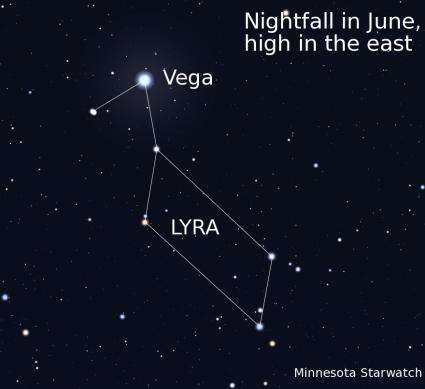Points North: Irony Amidst Beauty Along Autumn Byways
-
Fri, 10/01/2010 - 7:45am
Tweet
| Attachment | Size |
|---|---|
| Finalcut_PN_20101001.mp3 | 4.94 MB |
One word describes autumn color on the North Shore this year—extraordinary. Perfect summer weather extended into September, when just enough rain fell to replenish the thirsty forest. The trees responded with a brilliant burst of fall foliage. Every autumn is beautiful, but this is one of the best. As always, the maples along the high ridges above Lake Superior turned first, followed in short order by the underbrush, then the aspen and birch.
While leaves change color everywhere, the North Shore has the advantage of topography. Rugged, forested slopes rise up from the big lake, then break and fold as you move inland toward the Boundary Waters. The change in elevation—over 1,500 feet between Superior and the canoe country heights—leads to considerable variations in weather and nighttime temperatures, extending the color season over several weeks.
This leaves plenty of time to enjoy the colors, so Vikki and I make the most of it. While some of my hunting buddies may roll their eyes, leaf-looking drives are on my autumn agenda. Unlike the many tourists who drive for hundreds of miles to see the colors, we can see the best a Minnesota autumn has to offer on an afternoon jaunt.
We kicked our 2010 color tours a couple of weeks ago on the Grand Portage Indian Reservation, which forms the very tip of Minnesota’s famous Arrowhead region. Up in the backcountry of the Rez is a maple-canopied byway called the Rengo Road. Running roughly parallel to the Canadian border atop a high ridge, this single-track gravel route is like driving through a fiery tunnel of autumn splendor. At one point, you emerge from the tunnel to a sweeping vista of forested hills stretching into Ontario. The mix of maples, conifers and aspens beneath you creates a palette of oranges, green and yellow hues.
Leaving the reservation, the Rengo becomes the Otter Lake Road, a gravel route in the Grand Portage State Forest. Here, you’ll find another overlook a couple of hundred feet above the Pigeon River, which forms the border with Canada. Follow the Otter Lake Road to the Arrowhead Trail and turn north to reach another vista, this time looking across the Portage Brook/Stump River valley. Look carefully in the cutover areas beneath you and you just may see a moose.
Of course, we don’t happen upon moose very often these days. On a leaf-looking excursion along the Gunflint Trail last weekend, we were privileged to encounter three of them. But more on that later. Our drive was mostly about business and involved stopping at the resorts and small businesses along the way. This is always enjoyable, because the Gunflint is populated with people best described as few, but friendly.
I chatted with Dan and Teresa Baumann at Golden Eagle Lodge, got a grouse report from Dennis Katajamaki at Loon’s Nest, ate a tasty lunch at Trail Center and toured the new Chikwauk Museum near the end of the Trail. While we saw a lot of scenery—even the burned over lands near Seagull Lake are lovely at this time of year—wildlife eluded us. Going home, we left the pavement and drove across the Shoe Lake Road, which runs north of mighty Greenwood Lake to the Arrowhead Trail.
Twenty years ago, when the U.S. Forest Service built this road to accommodate logging trucks and then harvested much of the forest along it, the Shoe Lake Road was a great place to see moose. Today the cutovers have become extensive aspen thickets and, although biologists say the area still contains lots of moose, you are much less likely to see them. Part of the reason is the moose are harder to see now that the once-open cutovers are growing new trees. But the cutovers provided better moose habitat that the aspen thickets, so there are fewer moose, too.
So we were surprised to come around a corner and find a husky bull standing in the road. He was a prime specimen with a sleek black coat and newly polished antlers. Following the proper etiquette when you encounter a moose on the road (or anywhere, for that matter), we stopped and let him decide where he wanted to go. He started walking down the road away from us, but he was skittish and focused on something other than us. Moments later, a cow and calf stepped out of the brush. They crossed the road and, along with the bull, disappeared into a jungle of tag alders. Since seeing a moose is now an infrequent occurrence, we were tickled to have our paths cross with not one, but three of them. And, although I’m a hunter, I secretly hoped the trio would survive the hunting season.
Ironically, the next morning, en route to the grouse woods, I drove past a group of hunters with rifles at ready as they approached a moose they’d just killed alongside a well-traveled road. I happen upon such scenes every autumn and it seems an inglorious way to reduce the monarch of the north woods to possession. And I can only wonder what folks who are simply out for a drive to enjoy the North Shore’s scenery and hopefully see a living moose think or feel when they have a similar encounter.
Airdate: October 1, 2010
Tweet






